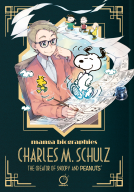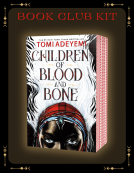
The Age of Melt
What Glaciers, Ice Mummies, and Ancient Artifacts Teach Us about Climate, Culture, and a Future without Ice
by Lisa Baril
This title was previously available on NetGalley and is now archived.
Send NetGalley books directly to your Kindle or Kindle app
1
To read on a Kindle or Kindle app, please add kindle@netgalley.com as an approved email address to receive files in your Amazon account. Click here for step-by-step instructions.
2
Also find your Kindle email address within your Amazon account, and enter it here.
Pub Date Sep 17 2024 | Archive Date Sep 17 2024
Talking about this book? Use #TheAgeofMelt #NetGalley. More hashtag tips!
Description
A thought-provoking scientific narrative investigating ice patch archaeology and the role of glaciers in the development of human culture.
Glaciers figure prominently in both ancient and contemporary narratives around the world. They inspire art and literature. They spark both fear and awe. And they give and take life. In The Age of Melt, environmental journalist Lisa Baril explores the deep-rooted cultural connection between humans and ice through time.
Thousands of organic artifacts are emerging from patches of melting ice in mountain ranges around the world. Archaeologists are in a race against time to find them before they disappear forever. In entertaining and enlightening prose, Baril travels from the Alps to the Andes, investigating what these artifacts teach us about climate and culture. But this is not a chronicle of loss. The Age of Melt explores what these artifacts reveal about culture, wilderness, and what we gain when we rethink our relationship to the world and its most precious and ephemeral substance—ice.
Available Editions
| EDITION | Other Format |
| ISBN | 9781643261515 |
| PRICE | $30.00 (USD) |
| PAGES | 272 |
Links
Available on NetGalley
Average rating from 13 members
Featured Reviews
The Age of Melt - What Glaciers, Ice Mummies, and Ancient Artifacts Teach Us about Climate, Culture, and a Future without Ice by Lisa Baril is a fascinating exploration into the glaciers that cover 10% of our Earth, that's 15 million square kilometers (5.8 million square miles) of glacierised areas (including Greenland and Antarctica)
I adore readng and learning about the natural world but at no point did I imagine that I could become so invested in the investigation and backstory of a body found in the ice of the Otzal (Alps) which was affectionately nicknamed "Otzi" by the researchers. This body defied all knowledge of those that had been trapped in such a way. It was not torn asunder, but perfectly preserved aside from an abrasion on the back of the head and weighing about 30lbs
This account got me hooked into the writing of Lisa Baril which is interesting, engaging and concise. This book gave me so much information but I did not feel overloaded due to it's affable, conversational style.
Watching and learning about glacier behaviour or Ice-Cap Archaelogy is a brilliant insight into the behaviour of our global eco-system and defines just how important they are on so very many levels. A book that would be loved by ecologists, climate watches, conservationists and indeed anyone with an interest in our natural world
Wonderful and highly recommended
Thank you to Netgalley, Timber Press and the author Lisa Baril for this fascinating ARC. My review is left voluntarily and all opinions are my own
 Donna T, Reviewer
Donna T, Reviewer
Despite the Global Warming/Climate Change controversy, most people agree something is happening to our temperatures. Wrath from God, mythical creatures, just natural occurrences, or volcanic action?
This book explores the consequences of melting glaciers: think fresh water supply. There is also knowledge hidden in those melting glaciers through ice patch/glacial archaeology. The ice thaw presents archaeologists with knowledge and First Nations with pieces of their heritage and culture by exposing, through melt, a wide assortment of artifacts nearly perfectly preserved.
Of particular interest to me is the fascinating details of the discovery and examination of Otiz, the Iceman, and the “Long Ago Person. The telling of their stories based on science was particularly interesting.
The writing style is simple to understand for so many age groups. I highly recommend this short nonfiction book.
Thank you to Timber Press for providing a copy of this book for review.
In the Age of Melt, Lisa Baril explains how ice patches and glaciers work and how they help us reconstruct and understand human history and our relationship with ice through time. Baril talks about how humans and ice bodies have experienced climate changes in the past, compared to how the current severe climate warming affects the melting of glaciers. As the ice melts, artifacts found get older, which helps us understand better how our ancestors lived and our climate history.
The book also analyses the implications of the loss of ice in how it affects the Earth's climate, our water supplies, and the challenges it represents to different communities and cultures. It also studies a few solutions some communities currently use for water scarcity. I believe the writing is accessible and explains concepts clearly so readers can understand scientific terms and ice patch archeology regardless of their background. I expected the book to expand more on the historical context and how our understanding of ice patches and glaciers has shaped human history and different cultures. I also wished it would have focused more on solutions and how our future may look instead of questioning whether we have done enough.
I highly recommend this book if you want to understand more about glaciers and how the ice and the artifacts found in them give us an insight into what the past looked like for the glaciers and the people living near them.
Thank you to Timber Press and Net Galley for the advanced copy of the book!
 Lisa D, Reviewer
Lisa D, Reviewer
The first time I remember reading about glaciers and their effects was when I was in elementary school taking the required class on the history of Indiana. How amazed I was that we could still see the effects of glaciers long after they were gone!
That was why I wanted to read The Age of Melt. In a way, the scientists studying glaciers and what they leave behind are modern detectives. There are several interesting stories about what scientists and even travelers have found.
Of course, with glaciers melting, we're going to find more and learn about what happened before people were able to put history in books. Melting glaciers are also going to cause challenges. Even people who aren't normally interested in reading about science may be as intrigued as I was as a young school kid, seeing the evidence and putting the clues together.
Thanks to NetGalley for letting me read this
I didn’t really know what to expect going into this book, as other than knowing a little about Otzi, this isn’t a topic that I’ve ever really looked into before. This was such an interesting look into this relatively new area of study and it was great to learn more about what’s been discovered through ice patch archeology. I would have preferred a little bit more time spent on the actual artifacts and discoveries found in the ice, but other than that it was very in depth and I’ll definitely be paying more attention to news about these kinds of discoveries in the future.
 Reviewer 725763
Reviewer 725763
From the Alps to the Andes, melting glaciers are revealing ancient artifacts and sparking a race against time to understand their secrets. This book explores the deep cultural connection between humans and ice, revealing how these melting landscapes tell stories of climate change, resilience, and the enduring power of nature. Entertaining and easy to read, this book provides a unique perspective on human history and humanity’s future.
Thanks, NetGalley, for the ARC I received. This is my honest and voluntary review.
If you love the mountains, if you’re worried about melting glaciers and unpredictable rainfall, this could be the book for you. Unlike many books about climate change, this one contains some realistic hope. The stories Lisa Baril tells are absolutely fascinating and cover a wide range of ice-related topic, including cultural aspects and the way people in remote places have used and worshipped glaciers and mountains, and how their lives are affected by the melting ice. This is the best sort of book; one where you learn something new and have fun doing it.
‘The Age of Melt’ is the result of climate change, but it’s not telling us how awful it is or how to solve it. Lisa Baril has chosen some specific cases of how it is affecting people around the world, but not all of those stories are doom-laden. For some people, melting ice is providing an opportunity to learn more about our ancestors. This is creating new types of archaeology she calls ice patch archaeology, though it is also known as glacial archaeology, and this is reinvigorating research into how precolonial peoples lived and hunted. It’s also creating opportunities to collaborate with Indigenous communities to make sense of the artefacts found on melting ice patches. In some cases, this has renewed interest in their own communities into the ancient techniques used by First Nations peoples. During a trip to Peru, Baril sees how mountain culture can be affected as the snows retreat. A Christian shell has been added to ancient rituals for worshipping mountain deities, with a vibrant annual pilgrimage to visit a glacier high in the Andes. As the glacier recedes, cultures are forced to adapt, putting their traditions and beliefs at risk.
But all is not lost. One of the highlights for me were the stories about growing glaciers. This sounds so far-fetched, but in the Himalayas and Karakoram regions in the north of India and Pakistan, people have been growing their own glaciers for a very long time using sophisticated but low tech methods to irrigate their crops. In recent years, the technique of creating artificial glaciers using terracing has been implemented to help manage unpredictable meltwater surges and provide farmers with water for irrigation. And in 2016, an Indian civil engineer won an environmental innovation prize for his low tech technique for creating ice stupas (large cones) that is now being developed in collaboration with Swiss engineers. This is not only good news for the future of glaciers, at least in the decades to come, but it is helping to preserve cultures and communities. I was in Switzerland this summer and missed the ice stupa, but I saw another Swiss glacier-saving technique in action: covering the flanks of glaciers with reflective white plastic fleece; this has even allowed glaciers to increase in volume. Amazing!
Lisa Baril’s style reminds me very much of a Reader’s Digest article, making the story visual and gradually introducing people and concepts so the reader isn’t overwhelmed. Rather than say that the famous Ötzi mummified body found in the Austrian Alps was found by hikers, she tells a whole story about why they happened to be there, why that area of snow was melting for the first time and why it was so well preserved. Scientific details are added gradually and naturally in the course of the story. Just occasionally, the story descends into over-fanciful detail, specifically when the author says that Ötzi wasn’t alerted to the approach of his attackers by a warning call from marmots or squirrels. This is hardly surprising as he was above the tree line. I also suspect she’s thinking of North American ground squirrels which do not live in Europe and are nowadays found higher than they should be in North America, attracted by humans feeding them.
One minus point: an occasional slip into over colloquial American slang that this British English speaker wasn’t sure about, though context subsequently explains. First instance, the theory that Ötzi, the mummified Alpine corpse, had “tied one on”. I might just have managed “on the lam”, which keeps turning up in recent years. I suspect she would be equally mystified if I wrote “three sheets to the wind”.
 Vansa D, Reviewer
Vansa D, Reviewer
Deeply well written book about the symbiotic relationship that human beings have had with ice, as
strange as it may seem. Baril first gives you an overview of the planet’s relation to ice, across millennia,
and then to the emergence of homosapiens, to give you a grounding of what to expect. She then has
some chapters of exciting ice archaeology finds, what they tell us about the lives of the people at the
time, and the condition of the planet, while also telling you about ice archaeology and all the joys and
complications thereof. Homo sapiens possibly evolved critical thinking and survival instincts when the
earth started cooling during a mini Ice Age, and humans had to start figuring out how to adapt to a very
different environment, possibly leading to them inventing a needle and thread and sewing together
hides to keep warm. This all seems obvious now, but would have taken years of trial and error, for that
inspiration to even strike. A mini Ice Age also a possible reason for Out of Africa migrations, which is
pretty much the creation of the world as we know it. The book then looks at communities that depend
on ice, or rituals around glaciers and ice and how changes in climate are affecting them. I loved her
chapter on Peru and the Andean ritual that combines both indigenous practice and Catholicism. She also
has interesting accounts of hunting in these landscapes and how that would have evolved. The last few
chapters are about communities that are trying to preserve glaciers in their areas, and has some great
descriptions of glaciers in Gilgit-Baltistan and Ladakh. This is an excellent book on a facet of nature that
we don’t acknowledge has played a huge part in our development as a species.
Readers who liked this book also liked:
L.M Montgomery
Children's Fiction, Comics, Graphic Novels, Manga, Teens & YA
Yuzuru Kuki
Biographies & Memoirs, Children's Nonfiction, Comics, Graphic Novels, Manga
JUNO
Arts & Photography, Comics, Graphic Novels, Manga, Travel
Silvia Moreno-Garcia
Historical Fiction, Literary Fiction, Sci Fi & Fantasy
Judith Orloff; Jennifer Adams
Children's Fiction, Middle Grade, Parenting, Families, Relationships
We Are Bookish
Sci Fi & Fantasy, Teens & YA


















